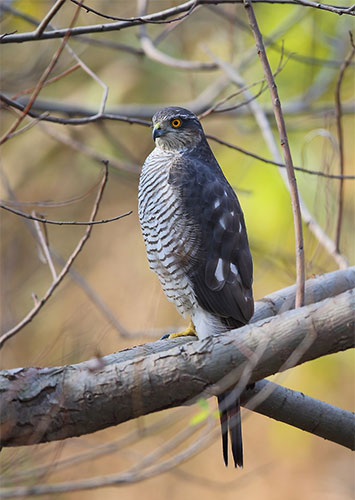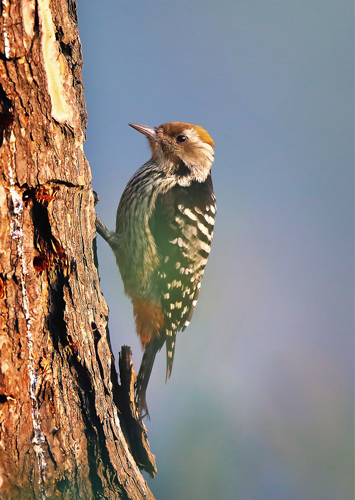Margallah Hills National Park
The Margallah Hills National Park (MHNP) is situated north of the Federal Capital of Islamabad in the foothills of the Himalayan Range. It was declared a national park on 27th April 1980 under Section 21(1) of the Islamabad Wildlife (Protection, Conservation and Management) Ordinance, 1979. Areas merged into the MHNP include compartments 2-5, 7-23, 28, 30-38(i) and 41(ii) of the Margallah Forest Reserve, compartments 1-25 of the Military Grass Farm, and various other lands including Shakar Parian Hills and the Rawal Lake. The altitude of MHNP ranges from 450m to 1,280m. The MHNP also includes some ‘unacquired land’ that occurs in pockets in the area in which MHNP is located.’ This unaquired land legally belongs to the communities and has not been purchased by the government authorities. This includes the areas of Talhar, Gokina, Shah Allah Ditta and Shahdara.


The topography is rugged, with numerous valleys and steep slopes. Rocks have been observed to date back to the Jurassic and Triassic ages, limestone being characteristic of the region (though shale, clay, and sandstone are also present). Soils are dark, with a high mineral content, and are capable of supporting good tree growth despite being shallow.
The climate of Margallah Hills is subtropical semi-arid. The region lies in the monsoon belt and experiences two rainy seasons. Winter rains last from January until March, and summer rains from July to September. Temperatures range from 1-15 °C in winter and 20-40 °C during the summer. Annual average rainfall is 1,000mm. There have been occasional incidents of light snowfall in severe winters.
There are two famous stories about the name of the area. According to one, Margallah is a combination of two words – ‘Mar’ means snake and ‘Galla’ means herd. Legend has it that there were many snakes in the Margallah Hills, hence the name. According to another story the hills are named after a murderous gang that used to rule this area.
Biodiversity
Despite its small size, the fauna of the MHNP is quite diverse due to its rich variety of habitats including thick vegetation cover and steep hillsides that provide shelter to a variety of animals, birds, and reptiles. The national park was setup to provide refuge to the Grey Goral, Barking Deer and the Leopard, as well as the Rhesus Monkeys, Jackals, Wild Boars, Porcupine, Mongoose and the Pangolin or scaly anteater. This park has been placed in The World Conservation Union (IUCN) Management Category V (Protected Landscape).
Vegetation
The Margallah Hills comprises of subtropical, dry, semi-evergreen forest and pine trees. The semi-evergreen forest is dominated by Phulai, Kahu, Sanatha, Garanda and Ber. The subtropical pine forest exists above 1,000 m, Chir Pine being the characteristic canopy species. Seventeen hundred species of flowering plants, fifty-three ferns and more than fifty species of grass exist in the area. In spring, the flowers such as tulips, dandelions, buttercups, poppies, and many other perennial plants bloom. The vegetation of the Margallah Hills is largely supported by the monsoon rains. The flora which is mostly sub-tropical in origin is a remnant of the natural communities from the great Indo-Himalayan ecosystem extending north-east into the greater Indian sub-continent and south-east Asia.
In general, the following distinct vegetation habitats or zones can be identified in the MHNP
- subtropical forest at lower and higher elevations
- subtropical pine forest
- subtropical dry semi-evergreen forest
In addition to the tree dominated areas, settlements, cultivated land, degraded lands and ravines can be seen in the Park
Common trees of the national park include Black Catechu(Khair), Arabic Gum (Kikar), Phulai, Orchid Tree(Kachnar), Palas, Wild Olive (Khuwan), Indian Gooseberry (Alma), Chir Pine (Chir), Oak (Shah Baloot)Golden Shower Tree (Amaltas). Common shrubs include Rubber bush(Ak), Hopbush (Sanatha), Malabar Nut(Bheaakr), as well as Garanda and Chiti Buti while some common herbs of the Margallah Hills include Giant Cane, Marijuana (Bhang), Iberian Knapweed, Eulophia, Geranium (Bhand) and Hibiscus, Green Amaranth (Chaulai), Nerium (Kaner).
In addition to native species, a number of invasive alien species have spread in the habitats of the Margallah Hills. Invasive alien species (IAS) are species whose introduction and/or spread outside their natural past or present distribution threaten biological diversity. The common IAS plants of MHNP include the dominant Paper Mulberry, Castor oil plant, Lantana, Carrot Grass, Cannabis and Common Cocklebur.
A large number of plant species found in Margallah Hills National Park are used by local communities for food and medicinal purposes. Malabar Nut (Adulsa) is used by locals for the treatment of asthma, bronchitis, internal hemorrhage, cough, local bleeding, thrombocytopenia and pyorrhea. Chaff-Flower (Poth Kant) is used in the treatment of a toothache, abdominal pain, dysentery, and rheumatism and skin diseases. Leaves of Green Amaranth (Chaulai) are used as an emollient as well as to treat amenorrhea; scorpion sting and snake bite. Neriumleaves and flowers are cardiotonic, diuretic, emetic, expectorant and sternutatory. Golden Shower Tree (Amaltas) bark and leaves, mixed are useful in pustules, ringworm, insect bite, facial paralysis and rheumatism. Twigs of Phulai are used for cleaning teeth. While the current legislation prohibits removal of and damage to vegetation in the national park, the Board is working towards approaches where controlled harvesting with community participation is permitted under a sustainable management framework.
Mammals
There are more than 30 species of large and small mammals reported from the MHNP. The composition of the mammalian fauna of the MHNP reflects a transition and overlapping between mountainous mammalian species and the species of the southern plains.
Common large mammals include Common Leopard, Barking Deer, Grey Goral, Rhesus Monkey, Wild Boar, Scaly Anteater and Jungle Cat.
Medium and small mammals reported from MHNP include Long-Eared Hedgehog, Indian Mole Rat, Palm Squirrel, Large Grey Mongoose, Small Indian Mongoose, Large Fruit Bat and Indian Gerbil.
The population of Wild Boar, Rhesus Monkey, has increased in recent years in the Margallah Hills while there has been a reduction in the population of Barking Deer. Grey Goral which was previously reported in the Margallah Hills has not been sighted in the recent past.
Herpeto-Fauna
Amphibians
There are 21 amphibian species reported from Pakistan. MHNP is home to at least 9 of them. These include the Southeast Asian Toad or Common Asian toad, Marbled Toad or Indus valley Toad, Ornate narrow-mouthed Frog, Marbled Balloon Frog, Murree Frog, and Indian Burrowing Frog.
Reptiles
Common lizard species of MHNP include Fat-tailed Gecko, Brook Gecko, Northern House Gecko, Garden Lizard and Indian Monitor Lizard.
A number of snakes have been reported from the MHNP. Most of these snakes are non-venomous including the Common Worm Snake, Indian Python, Dhaman or Rat Snake, Common Kukri Snake and Common Wolf Snake. The venomous snakes include Indian Cobra, the Common Indian Krait which is glossy dark brown or black with white cross streaks, and two species of Vipers, identified by their arrowheads.
Birds
There are at least 218 species of birds reported from the Margallah Hills Range within the MHNP. Out of these, 82 resident, 32 summer visiting and breeding species, 73 winter visitors, and 31 transit migrants have been reported.
Flagship species of the MHNP include the White-crested Kaleej Pheasant, the Peregrine or Shaheen Falcon, the Red-capped Falcon, the Fairy Pitta or Indian Pitta or Blue-winged, and the Tytler’s or Slender-Billed Leaf Warbler.
Other common bird species include Common Hawk Cuckoo, Plaintive Cuckoo, Eurasian Cuckoo, Peregrine or Shaheen Falcon, Red-capped Falcon, Rufous-tailed Rock-thrush Eagle Owl Black Partridge.
Butterflies
The Margallah Hills are a natural heaven for a variety species of butterflies. Fifty-five species of butterflies have been reported from the MHNP. Of these, 24 are considered common, 28 fairly common or frequently occurring, and 3 are rare. Common butterfly species of the MHNP include the Common Leopard, Mottled Emigrant, Lemon Emigrant, Common Emigrant, Large Cabbage White, Pioneer, Common Grass Yellow, Common Brimstone, Plain Tiger and Common Tiger.
Threats to the Park
Despite being declared as a protected area, the environment and biodiversity of the Margallah Hills National Park face a number of threats.
Encroachments
Margallah Hills National Park lies adjacent to the capital city of Islamabad. To the northwest is the incipient industrial center of Taxila. Encroachments from these urban areas pose serious threats to the integrity of the wilderness of the Park. Local communities are expanding their houses and building new rooms to live and to rent them to people from other areas working in Islamabad.
Wood Cutting and Grazing
The population of communities living inside the Park has increased over the years. These communities use the national park for grazing which destroys the vegetation cover and tramples young seedlings. Moreover, the communities cut trees and bushes for fuel, gather fodder for their animals, divert natural water streams to cultivated plots near their homes, and gather products such as kachnarand rethas for sale. Considerable damage is done to the trees by these activities. Some residents even hunt native animals such as hares and birds for food and sport. Inadequate disposal of liquid and solid waste by the communities is a major reason for environmental pollution and degradation.
Increasing Number of Visitors
The increasing numbers of visitors to the national park contribute towards habitat degradation, pollution and biodiversity disturbance. A two-lane metalled road, from Islamabad to Daman-e-Koh, Pir Sohawa, and the Makhnial range, and the installation of roadside lights in the Park has increased traffic—and subsequently air and noise pollution. This increasing traffic and the roadside lights which are not switched off till midnight restrict the movement of animals and disturb their diurnal patterns.
Fires
Fires are a fairly common occurrence in the Margallah Hills and require significant expenditure and manpower to extinguish. Eighty-five percent of these fires occur during the dry May-June period preceding the monsoon rains and are all caused by people.
One of the main causes of forest fires is visitors’ negligence. Usually, visitors throw cigarettes or do not completely extinguish the fire after cooking which leads to forest fires. When members of the local community are fined or punished for illegal activities, they get involved in starting forest fires as revenge against authorities. The local community intentionally sets fires in the forest so they can collect dry wood after the fire is put out as heavy fines can be imposed on cutting green trees.
Alien Invasive Plant Species
Alien invasive vegetation species push out native species and grow at an alarming rate, negatively impacting the delicate balance of the park ecosystem. The unscientific introduction of exotic vegetation like Paper Mulberry, Parthenium and Lantana in the Park has not only impacted the vegetation balance but also led to an increase in the incidence of allergies.
Quarries
There are a number of rock mining quarries in the Park where the habitat is severely degraded. Most of the quarries have discontinued operations and others are expected to be closed in the near future.
Local Communities
There are over 30 settlements in and immediately around the periphery of the National Park. The total population in the settlements in national park is close to 70,000. The largest settlement is in Nurpur with a population of just over 15,000 persons, followed by Chauntra with 12,000, and Kot Hathial, Gokena, Talhar and Shah Allah Dita with about 9,000 persons each.
Education
Many of the Park settlements have government primary schools. However, only the large villages like Nurpur, Gokina and Talhar have secondary schools. For higher education, students from these villages have to come to Islamabad.
Health
Most of the settlements have no medical facilities available. Larger settlements like Nurpur, Shahdara, Gokina and Talhar have a medical doctor and midwife.
Water Supply
Other than Nurpur and Shah AllahDitta, the other villages do not have any water supply. Women and children have to carry pots and pans over large distances from springs or wells to take water home.
Agriculture
The larger settlements like Gokina, Talhar and Shah Allahditta are the only ones with landholdings. Agricultural activities are limited to subsistence farming due to limited land and the shortage of water. In all the settlements, the summer crop is corn and the winter crop is wheat.
Livestock
Typically every household in the settlements has at least one cow or buffalo and a few goats. To graze, the livestock is taken to the most accessible part of the national park and returned by sundown.
Fuel Consumption
With the exception of a very few households in the larger settlements where LPG cylinders are used, wood extracted from the national park is used for firewood and fuel.
Occupation
Close to half of the men in the Park settlements are employed. Majority of these men are working in junior positions in the Capital Development Authority (CDA) as well as government or private organizations, as naib qasids, security guards or daily wage laborers. Due to social taboos, and lack of education women do not venture out of their homes for jobs.
Infrastructure
The status of infrastructure in the large four villages is very different from the remaining twenty-five odd smaller ones. The larger ones have metalled road access, telephone lines, post offices, are close to police stations and have regular transport to Islamabad. The smaller villages have none of the above, with kutcha tracks, no electricity, telephone or post offices.
